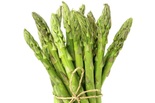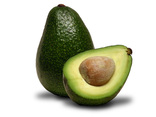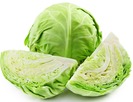18 foods you don’t need to buy organic
|
Editor’s note: The following list, which includes the produce on Environment Working Group’s “Clean 15” list plus 3 additional, only considers pesticide residue on the produce itself.] In 2013, the U.S. Department of Agriculture (USDA) tested 3,015 produce samples and found that almost two-thirds contained pesticide residues. The Environmental Working Group (EWG), a non-profit, non-partisan advocacy group for human health and the environment, calculated that USDA tests found a total 165 different pesticides on thousands of fruit and vegetables in the 2013 sampling.
While these findings might increase your desire to always choose organic over conventionally grown produce, in fact, there are many traditionally grown fruits and vegetables that are fine to include in a pesticide-free diet. Of course, there are foods that you should always buy organic, like apples, peaches and nectarines — nearly 100 percent of these fruits have tested positive for at least one pesticide residue. The EWG has produced the Shopper’s Guide to Pesticides in Produce, which includes the “Dirty Dozen” and “Clean Fifteen” lists to help you decide what to buy organic and what’s okay to buy non-organic. Why do some types of produce have more pesticide than others? Richard Wiles, senior vice president of policy for the Environmental Working Group says, “If you eat something like a pineapple or sweet corn, they have a protection defense because of the outer layer of skin. Not the same for strawberries and berries.” There are many reasons to buy organic: USDA organic certification covers all aspects of a farming operation, from seed sources (the USDA prohibits GMOs in organics, for example) and soil conditions to crop health and pest management. Economics plays a role: While GMO giants like Monsanto have a huge share of the seed market, there are smaller distributors that sell conventional non-GMO seeds, such as corn. For small-scale farmers, this is often more affordable than the GMO variety. Economics also plays a role on the consumer end: In many parts of the country, such as the so-called “food deserts” in New York City and other urban centers, organic produce is simply not available. In many of these cases, the consumers are from low-income neighborhoods who cannot afford organic produce, even if it were available. Understanding which conventional produce has little to no pesticide residue is important for consumers who want to reduce or eliminate their intake of pesticides and also save money — or who have no access to organic options. In many places, eating organically remains a financial or practical impossibility. But eating less pesticide residue still remains an option. If you are looking specifically to avoid pesticide residue, there are several conventionally-grown fruits and vegetables that have little to none. In general, you are going to be safe from pesticide residue by purchasing non-organic versions of the following 18 fruits and vegetables: 1. Asparagus
2. Avocado
3. Cabbage
http://www.rawstory.com/2015/06/here-are-18-foods-you-dont-need-to-buy-organic/
|



